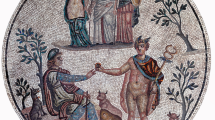Abstract
A mobile and easily practicable microsampling technique for historical glasses and its application is presented. About 100 μg of material is scraped off the object with a fine grinding file. The analysis of main, minor and trace elements in the digested sample is performed by IC, GFAAS and FIA with photometric detection. The procedure has been verified by measurements of standard glasses. Investigations of baroque ruby glasses showed the suitability of the microsampling technique for archaeometrical application.
Similar content being viewed by others
Author information
Authors and Affiliations
Additional information
Received: 6 January 1997 / Revised: 17 March 1997 / Accepted: 25 March 1997
Rights and permissions
About this article
Cite this article
Schulze, G., Horn, I. & Bronk, H. A new concept for the quasi non-destructive microsampling of historical glasses. Fresenius J Anal Chem 358, 694–698 (1997). https://doi.org/10.1007/s002160050493
Issue Date:
DOI: https://doi.org/10.1007/s002160050493




